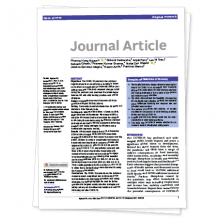Journal article
Oct 08 2020

Trends and inequalities in the nutritional status of adolescent girls and adult women in sub-Saharan Africa since 2000: a cross-sectional series study (BMJ Global Health, 2020)
Journal article
Jul 17 2020

Nutrient Adequacy Is Low among Both Self-Declared Lacto-Vegetarian and Non-Vegetarian Pregnant Women in Uttar Pradesh (Nutrients, 2020)
Journal article
Jul 16 2020

National nutrition strategies that focus on maternal, infant, and young child nutrition in Southeast Asia do not consistently align with regional and international recommendations (Maternal & Child Nutrition, 2020)
This study examines the consistency of national nutrition strategies and action plans (NNS) focusing on maternal, infant, and young child nutrition in Southeast Asia with international recommendations.
Journal article
Jul 16 2020

Stop Stunting in South Asia. Improving child feeding, women's nutrition and household sanitation
This overview paper summarizes and builds on papers from the Stop Stunting Conference of 2014, advocating to focus on child feeding, women's nutrition, and household sanitation as investment areas to prevent child stunting in South Asia.
Journal article
Nov 15 2019

A Double Edged Sword? Improvements in Economic Conditions over a Decade in India Led to Declines in Undernutrition as Well as Increases in Overweight among Adolescents and Women (Young M., 2019. Journal of Nutrition)
This study examined the national and state trends for BMI in women and identified determinants for the dual burden of undernutrition and overweight/obesity among adolescent girl and women.
Journal article
Aug 01 2019

Does health worker performance affect clients’ health behaviors? A multilevel analysis from Bangladesh (Epstein, A., 2019. BMC Health Services Research)
In this study, reseearchers found evidence for an association between health worker compliance and client health behaviors; however, small effect sizes suggest that behavior change is multifactorial and affected by factors beyond care quality.

